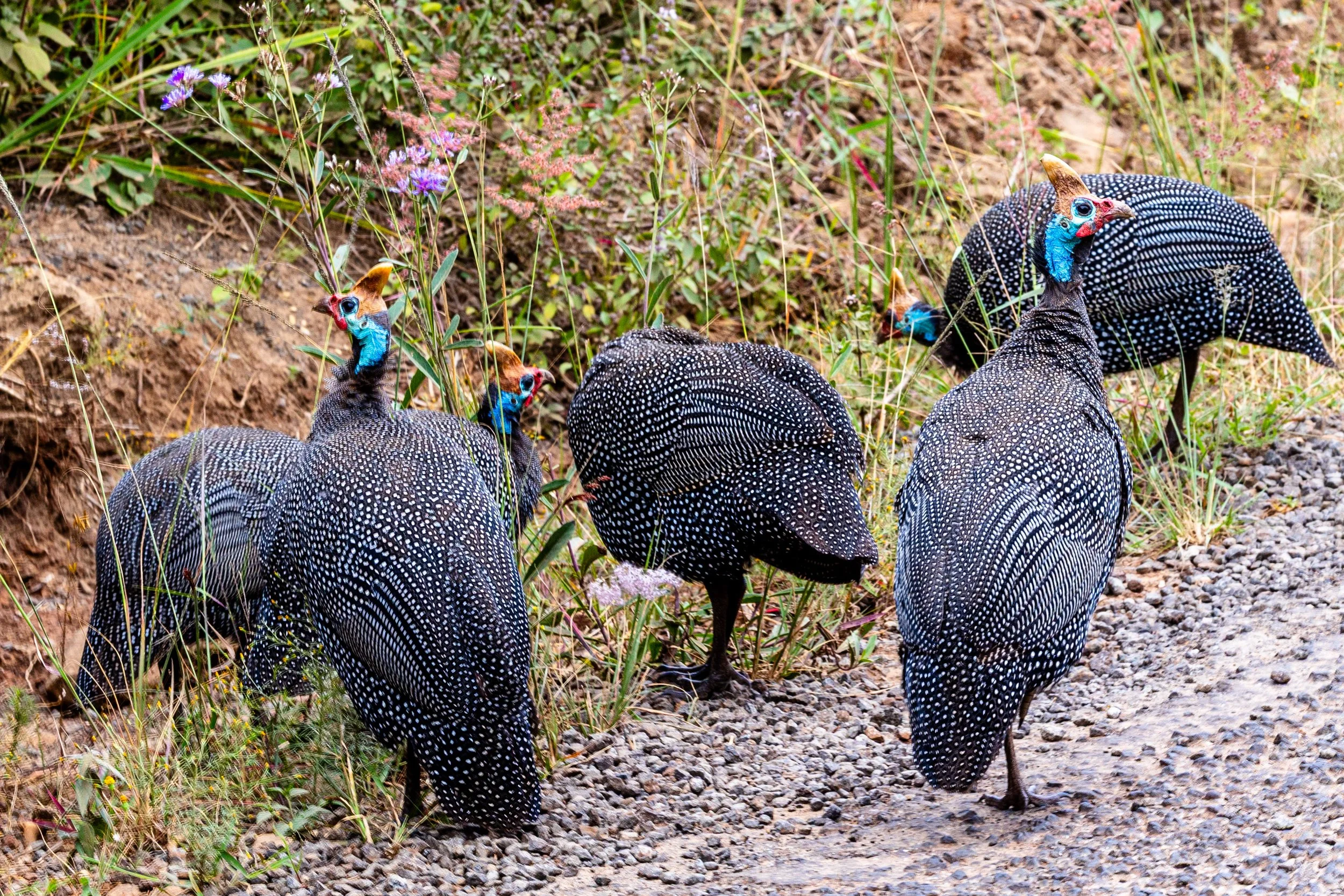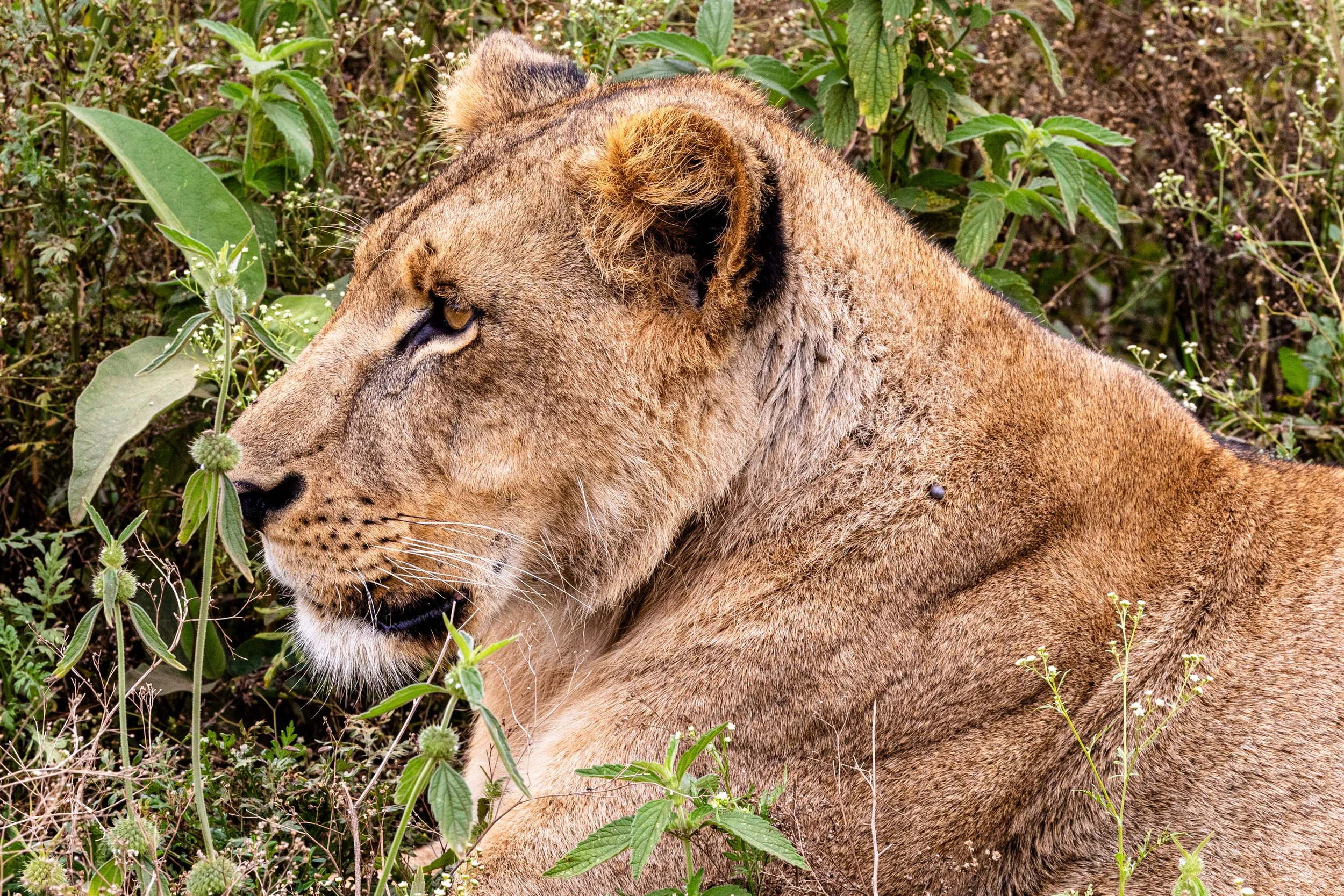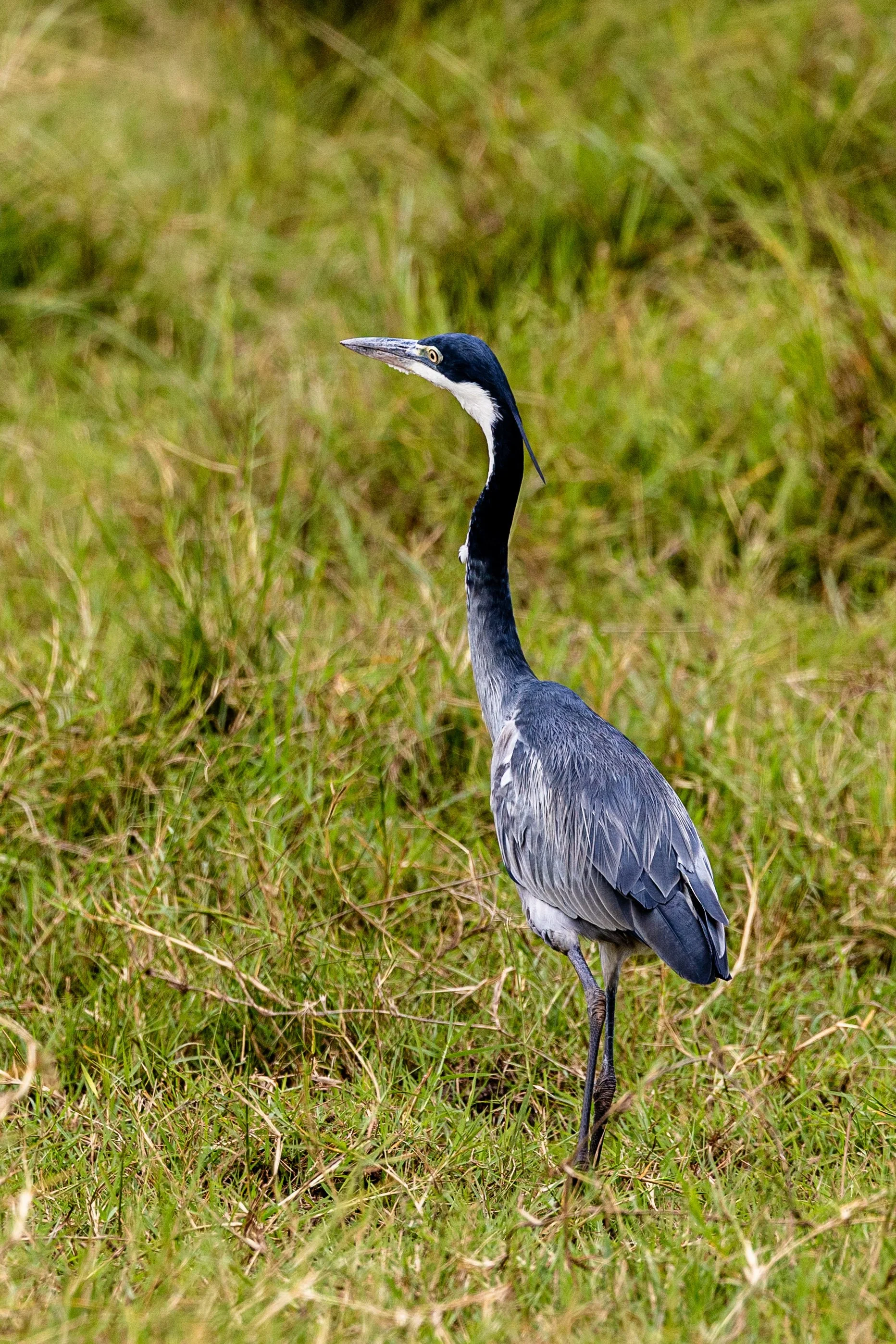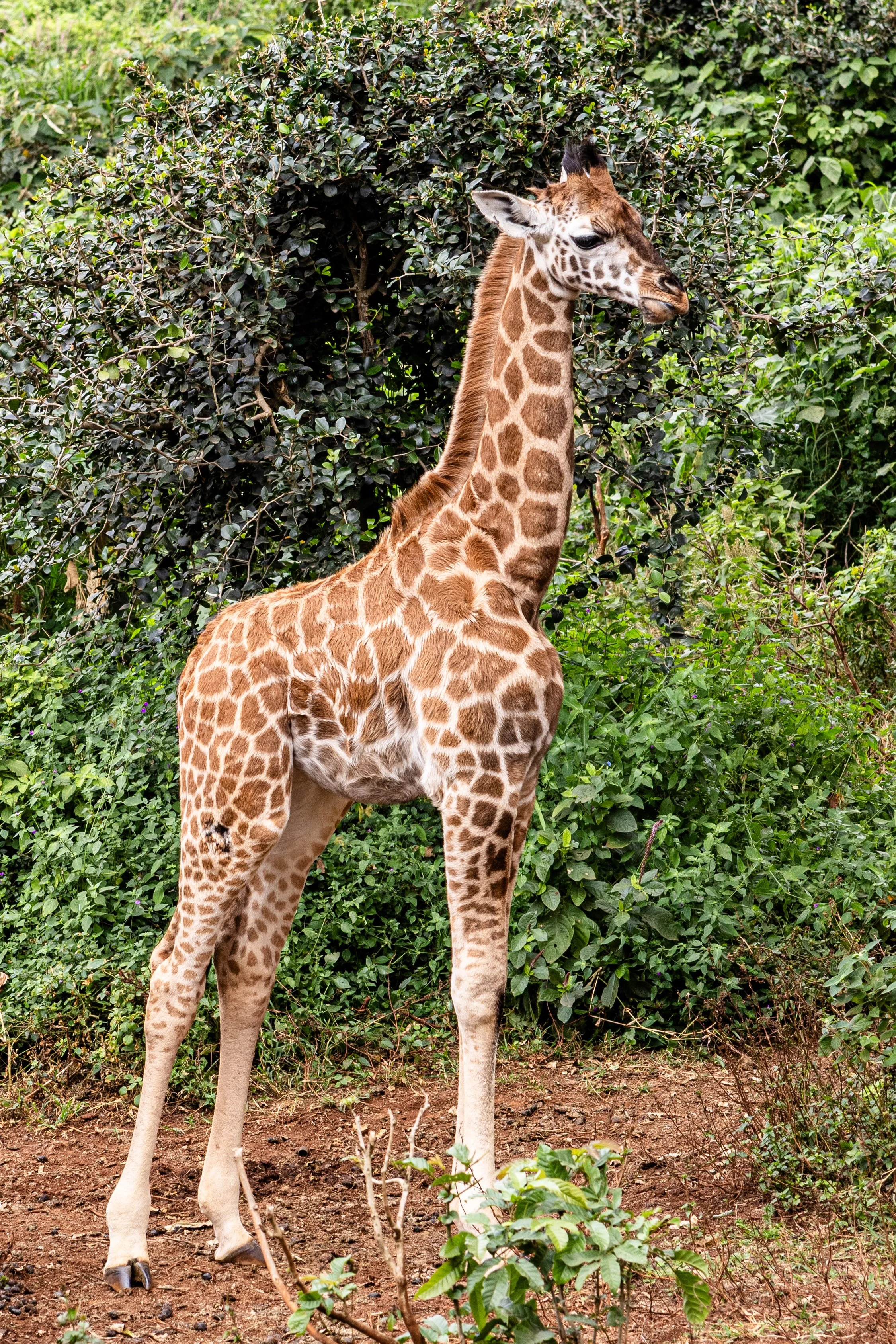
July 17, 2025
Nairobi National Park
Nairobi National Park is a national park in Kenya that was established in 1946 about 7 km south of Nairobi. It is fenced on three sides, whereas the open southern boundary allows migrating wildlife to move between the park and the adjacent Kitengela plains. Herbivores gather in the park during the dry season. Wikipedia
One of our Safari Vehicles.
Main Gate to Nairobi National Park
Helmeted Guineafowl
The first lion sighting.
She didn't seem to mind that we were nearby.
She got up and appeared to be on the hunt.
We surmised these ostriches may have caught the lioness' interest.
Malachite Kingfisher
Our first Hippo
A pod of hippos
Black-Headed Heron
Impala
Rhinos
A dazzle of zebras
Sheldrick Wildlife Trust
From Sheldrick Wildlife Trust Nursery
"The Sheldrick Wildlife Trust is world-renowned for its work rescuing and rehabilitating orphaned baby elephants. Our Elephant Nursery in Nairobi National Park is where an orphan's journey begins — a journey that will culminate, years down the line, in their reintegration back into the wild. Every day, from 11am to 12 Noon, we invite ticket-holders to join us for an unforgettable hour with the Nursery herd. The visit begins as the orphaned elephants converge for their midday milk feed. Afterwards, watch them enjoy a playful frolic in the dust or, if the mood suits them, a full mud bath. Our Keepers are on-hand to introduce you to each of the orphans, sharing their unique rescue stories and explaining the threats facing elephants."
Feeding the orphan elephants
The youngest elephant at the Trust
The other elephants watch over the youngster.
Feeding the orphans
After feeding it's play time.
African Fund for Endangered Wildlife - Giraffe Center
The Giraffe Centre is located in Lang’ata approximately 20 kilometers (12 mi) from the center of Nairobi, Kenya. It was established in order to protect the vulnerable Rothschild's giraffe, that is found only in the grasslands of East Africa.
In 1979, the Giraffe Centre, a nature sanctuary for visiting and including wildlife conservation education for urban school children, was started by Jock Leslie Melville, the Kenyan grandson of a Scottish Earl,[2] when he and his wife Betty captured two baby giraffe to start a program of breeding giraffe on their Lang'ata property, site of the present Centre. Since then the programme has had huge success, resulting in the introduction of several breeding pairs of Rothschild Giraffe into Kenyan national parks.[3]
By 1983 enough money had been raised to establish the Giraffe Visitor Centre as a tourist destination just outside Nairobi.[4]
The main attraction for both school children and visitors is feeding giraffes from a raised observation platform. The Giraffe Centre is also home to several warthogs which freely roam the area along with the giraffes.
This little guy was only a few months old.
Feeding the giraffes.
Warthogs cleaning up.
Giraffe Manor, where one can wake up with the giraffes.
Karen Blixen Museum
“The Karen Blixen Museum, located 10 km outside of Nairobi, Kenya, "at the foot of the Ngong Hills", is the former African home of Danish author Karen Blixen, famous for her 1937 book Out of Africa which chronicles life at the estate.” - Wikipedia
The House. Unfortunately, no photos could be taken inside.
A tractor used in farming the coffee plantation.
Coffee processing equipment.
Tree hyrax have taken up residence inside the coffee processing equipment.
A coffee plant.
Kobe Tough
KOBE is the Swahili word for the Africa Sea Turtle - a beautiful sea creature with a hard external shell. We believe that KOBE represents both the amazing beauty and the toughness of the African Savannah.
We started bead making as a direct response to the devastating effects of climate change among the Maasai. The Maasai, a pastoralist community in Kenya, have borne disproportionately the negative effects of climate crisis manifested in the form of prolonged drought whose effect has been to wipe out entire herds of cattle which was hitherto their livelihood and only means of survival.
With this devastation, communities are unable to send their children to school and the obsession to restock declining herds has forced many families to marry of their child daughters to get dowry in form of cows to replenish their herds and preserve wealth and status. This crisis is what led us to intervene.
Through our work with 400 Maasai women in four groups, we have been able to provide a much needed livelihood support and keep girls in school, reduce incidences of Female Genital Mutilation (FGM).
We have been upskilling the traditional beading skills of the Maasai women to help them make products that are of higher standards and are both relevant and acceptable to a wider audience. We now have the first Maasai beaded Apple Watch bands ethically made following fair trade principles. They also make belts, bracelets, collars and other beaded products and our work is to provide the support and the platform for these amazing women to amplify their work.
Then in 2020, as we were working with Maasai women, COVID-19 broke out with its devastating effects on the job market. A group of 300+ women (mostly single mothers, orphans and widows) who had been making ceramic beads in Karen Nairobi were laid off as tourism plunged. Most of these women have not been able to return to work. We responded to this situation by establishing a ceramic beading division to help these women cope with the crisis. This has provided a lifeline to them and we not only pay these women fair wages but we also pay them higher than their previous wages. We now employ twenty nine (29) of these women and we hope to bring back all the 300+ women.
Our tour guide led us through the complete process of making the ceramics.
This worker was making a necklace. She gave me the clay bird sitting on the table.
Hand painting the beads that will go into a necklace.
Some of the ceramics sitting in the kiln waiting to be fired.

















































